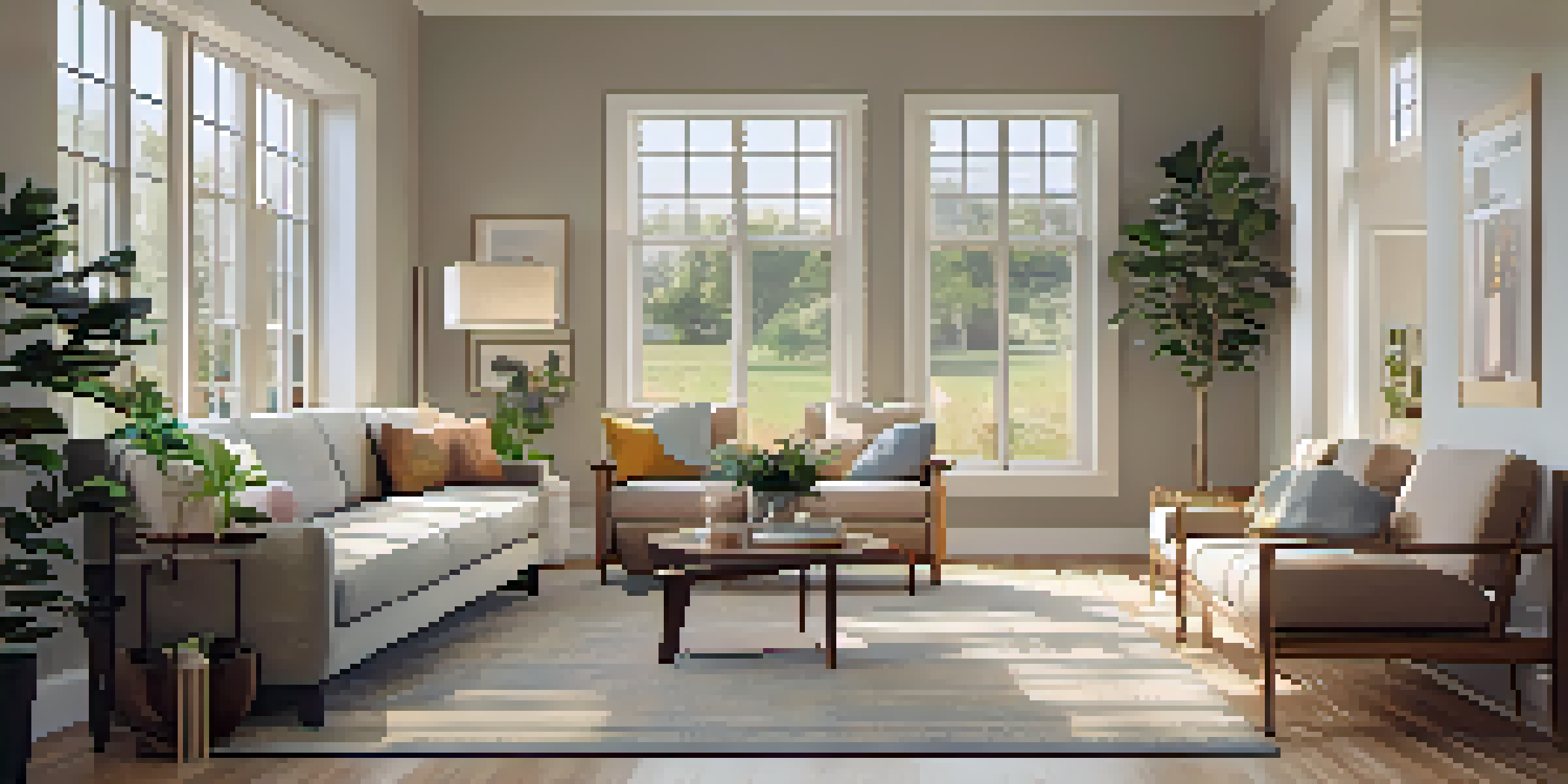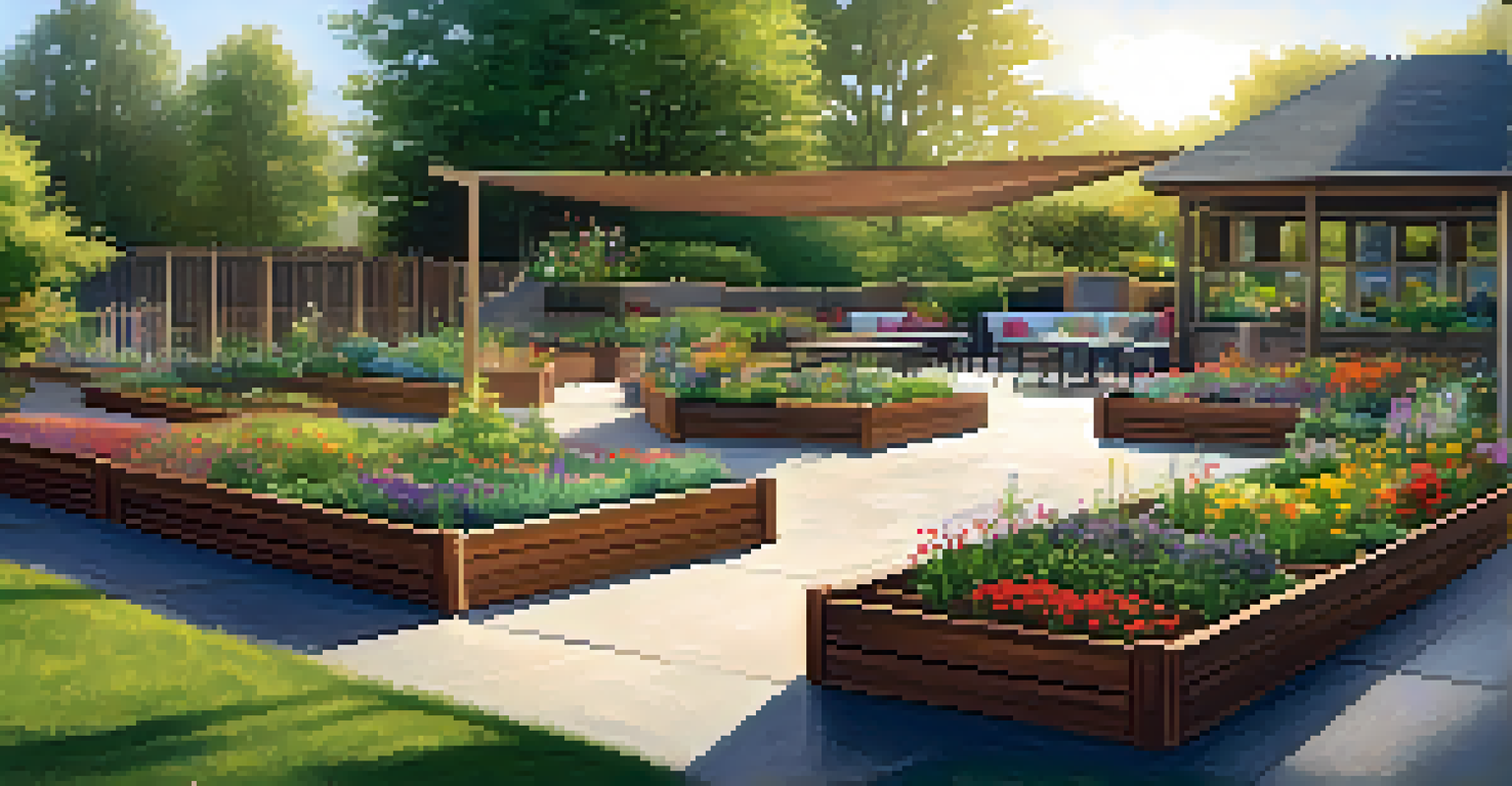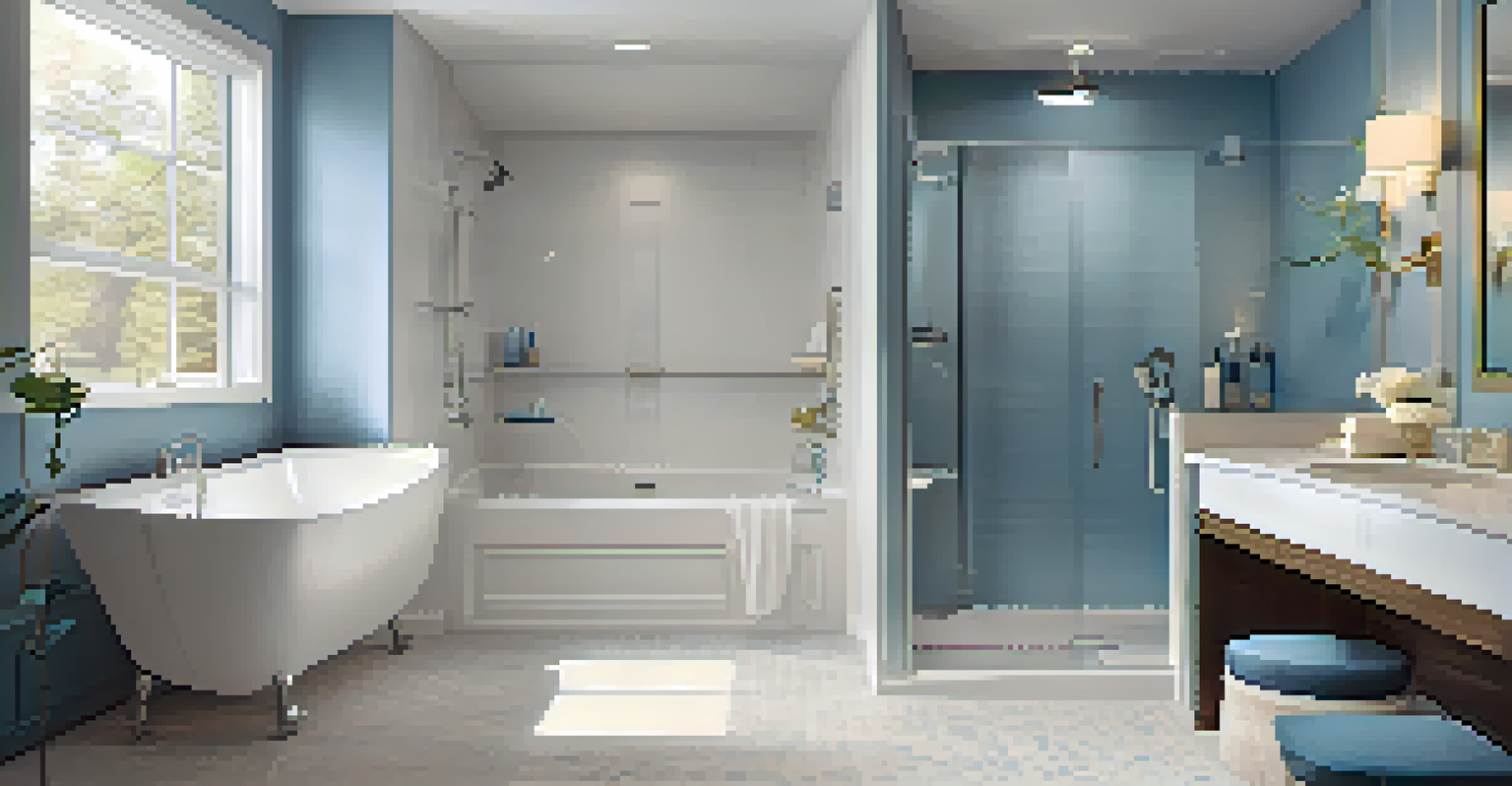How to Ensure Long-Term Accessibility in Your Home

Understanding the Importance of Home Accessibility
Accessibility in the home is about more than just convenience; it's about ensuring that everyone, regardless of their physical abilities, can navigate their environment comfortably. Imagine a home where every room is easily accessible, making life simpler for family members and guests alike. This not only enhances quality of life but also fosters independence for individuals with mobility challenges.
Accessibility allows us to tap into our full potential and embrace the world around us.
Long-term accessibility planning means thinking ahead about potential changes in your own abilities or those of your loved ones. For instance, if you or someone in your family is aging, you might want to consider features that accommodate future needs. By proactively addressing accessibility, you can avoid costly renovations later on and create a welcoming atmosphere for all.
Moreover, an accessible home can also increase property value and marketability. Many homebuyers today are looking for features that support aging in place or cater to various needs, making your home more attractive. In essence, investing in accessibility is not just a personal benefit but a smart financial decision.
Evaluating Your Current Home Setup for Accessibility
The first step in ensuring long-term accessibility is to evaluate your current home environment. Walk through each room and take note of potential barriers that could hinder movement or usability. Common issues include narrow doorways, stairs without handrails, and cluttered spaces that make navigation difficult.

Consider asking for feedback from family members or friends who may have mobility challenges. Their insights can provide valuable perspectives on what adjustments might be necessary. Sometimes, minor changes like rearranging furniture or adding grab bars can make a significant difference in comfort and safety.
Home Accessibility Enhances Lives
Creating an accessible home not only improves quality of life but also fosters independence for individuals with mobility challenges.
Utilizing checklists or guides designed specifically for home accessibility assessments can also be helpful. These resources often highlight specific areas to address, such as bathroom modifications or kitchen layout changes. By systematically evaluating your home, you can create a comprehensive plan for improvements.
Incorporating Universal Design Principles
Universal design is a concept that emphasizes creating spaces that are usable by everyone, regardless of their age or ability. By integrating universal design principles into your home, you ensure that it remains functional and accessible for all. This might include features like lever-style door handles, wide hallways, and non-slip flooring.
Designing for accessibility is not just about meeting standards; it’s about creating a better quality of life for all.
Another key aspect of universal design is flexibility. For example, consider adjustable countertops or cabinets that can be modified as needs change over time. This forward-thinking approach not only accommodates current accessibility needs but also prepares your home for future requirements.
Additionally, universal design can enhance the aesthetic appeal of your home. Many of these features blend seamlessly with modern design trends, proving that accessibility doesn't have to compromise style. By prioritizing universal design, you create an inviting space that values both functionality and beauty.
Creating Accessible Outdoor Spaces
When thinking about accessibility, it's easy to focus solely on indoor features. However, outdoor spaces are equally important and should be designed with accessibility in mind. Consider adding ramps instead of steps and ensuring pathways are wide and even to accommodate wheelchairs and walkers.
Incorporating raised garden beds is another great way to make outdoor areas more accessible for everyone. These allow individuals with limited mobility to enjoy gardening without the strain of bending over. Additionally, providing seating options at various heights can encourage everyone to enjoy your outdoor spaces together.
Plan for Future Accessibility Needs
Proactively addressing accessibility can prevent costly renovations and ensure your home remains welcoming as family needs change over time.
Don't forget about lighting and visibility, too. Well-lit pathways and outdoor areas not only enhance safety but also make it easier for individuals to navigate at night. By creating accessible outdoor spaces, you extend the welcoming atmosphere of your home beyond its walls.
Safety Features to Include for Long-Term Accessibility
Safety is a paramount concern when planning for long-term accessibility in your home. Features such as non-slip mats, grab bars in bathrooms, and adequate lighting can prevent accidents and promote confidence in navigating the space. For instance, strategically placing grab bars near toilets and in showers can make a world of difference.
Consider also installing smart home technology that can aid in safety. Devices that allow voice commands for lights, locks, and alarms can be incredibly beneficial for individuals with mobility challenges. This technology not only enhances safety but also provides convenience and peace of mind.
Regularly reviewing and updating safety features is essential as well. As needs change, so should the safety measures in your home. By staying proactive, you ensure that your living space remains secure and accessible for everyone.
Budgeting for Accessibility Improvements
Creating an accessible home doesn't have to break the bank, but it does require some financial planning. Start by setting a realistic budget based on your evaluation of current needs and desired changes. Identify which modifications are essential and which can be prioritized for later, allowing for a manageable approach to improvements.
Look into local grants or programs that support accessibility renovations. Many communities offer financial assistance or tax credits for making homes more accessible, which can ease the financial burden. Additionally, consider consulting with a professional who specializes in accessible design; they can provide cost-effective solutions tailored to your situation.
Budget Smart for Accessibility
Investing in accessibility improvements requires careful budgeting and exploration of local grants, making it a financially savvy decision.
Remember, investing in accessibility is not just about the immediate costs. Think of it as an investment in your quality of life and independence. By planning your budget wisely, you can create a home that serves you well now and in the future.
Maintaining Accessibility Over Time
Once you've made accessibility improvements, it's important to maintain these features over time. Regular checks on safety features, like grab bars and non-slip mats, can help ensure they remain in good condition. Just like any other part of your home, accessibility features need attention to keep them functional and safe.
Moreover, as family dynamics change, reassessing accessibility needs is crucial. New members may join the household, or existing members may experience changes in their mobility. Regularly discussing these needs can help you stay ahead and make necessary adjustments.

Finally, keep an open line of communication with family and friends about accessibility concerns. This fosters a culture of awareness and support, ensuring that everyone feels comfortable and included in your home. By maintaining accessibility, you create a lasting environment of care and consideration.